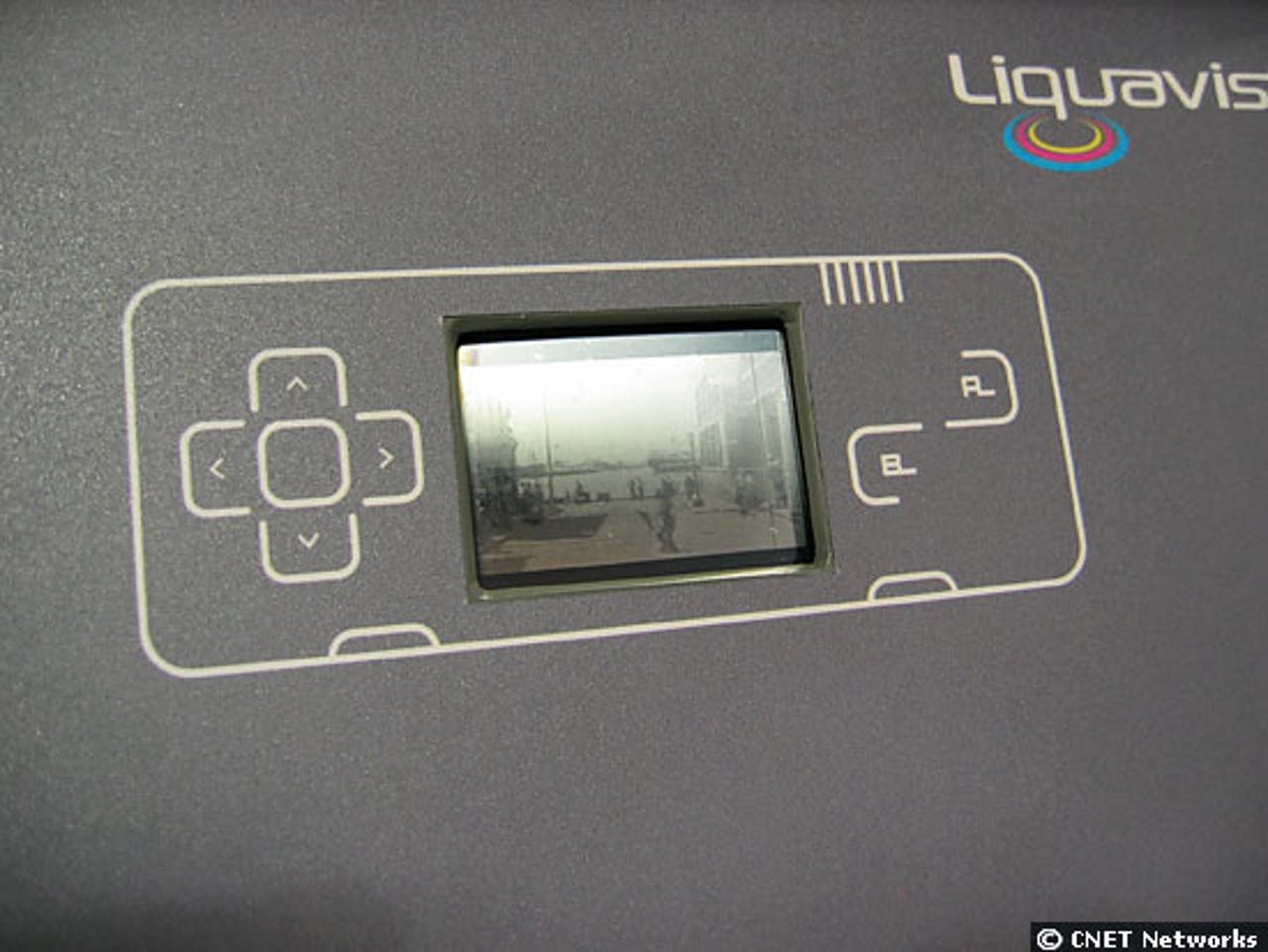Photos: Displays of today, tomorrow


Small screen
This small screen--about 2 inches by 2 inches--from Liquavista can display clock faces, videos and games and can show things in gray scale or color. The screens consume far less power than standard LCDs, according to CEO Mark Gostick. The Royal Philips Electronics spinoff will first sell its technology to the watch industry. "There is no intrinsic barrier to size. In five years, you could see this in notebooks," he said.
Electrowetting
Liquavista screens rely on electrowetting. Each pixel contains water and a droplet of dyed oil. When an electric charge is applied to the outside surface of the pixel, it becomes hydrophilic. The water is attracted to the surface, forcing the oil to the side and making the pixel take on the color of the lower surface of the pixel, which is white in this case. When the charge is reversed and the surface becomes hydrophobic, the pixel takes on the color of the dyed oil.
Toshiba 3D prototype
An image of a 3D prototype display from Toshiba. The screen sends out 16 images at once. Glasses aren't needed to see images in 3D, but the display works best when tilted up at a 30-degree angle. As a result, a person looking at the screen needs to hold the screen nearly horizontally. It works best when you stand about a foot away. The camera cannot capture the 3D nature of the screen.
Philips 3D LCDs
Philips is selling 3D LCD monitors to the commercial market and will try to bring the technology to
Small OLEDs
Small OLED (organic light emitting diode) screens from eMagin.
Sharp two-image TV
All hail the Sharp two-image TV. Someone standing on the right side of the TV sees a different show than people standing on the left. The two images in the picture are simultaneously coming out of the TV, but they can't be seen by the same person at the same time.
Sharp two-image TV 2
Looking directly at the Sharp two-image TV, some blending of the two shows becomes visible.
SeeReal 3D monitor
The 3D monitor for SeeReal Technologies. If you stand about two feet away, the images or movies on the screen become 3D. If you stand slightly closer, further away or to the side, however, you get a lot of color fringing. The camera only picks up color fringing; not having a brain, the camera cannot be tricked into thinking it sees 3D images. The monitors, which sell for around $4,200, are especially useful for animators and oil and gas engineers.
Optical compensation film
A roll of optical compensation film from Far Eastern Textile of Taiwan. This stuff is in all the screens you own.
Flexible OLED screen
A flexible OLED screen made with materials from Universal Display. OLEDs, which consume little power, were once considered the heir apparent to LCDs in mobile phones. But now Qualcomm and Liquavista say they can provide better screens that consume even less power. OLED, however, has been tested in the market for some time. The other two are just coming out.
IMod screen
The iMod screen from Qualcomm. The screen is essentially a complex mirror that relies on the light of the sun, or ambient artificial light, to illuminate images. As a result, the screens use far less power than conventional LCDs, which rely on electric backlights. (In low-light situations, iMod uses a front light.) Qualcomm obtained the technology
Color iMod screen
A color iMod screen. The first ones will be gray scale, but Qualcomm wants the screens to be able to show video, games and anything else you might want to watch on a phone.
LCD goggles and headset
On the left you have LCD goggles from Oriscape on the head of a News.com employee. The $400 goggles, which contain an LCD panel from Kopin, are primarily used by gamers. On the right, an LCD headset for watching movies. With the portable DVD player, the headset costs $400.
Digital Riflescope
The Digital Riflescope from Elcan. It was developed for the military but now is sold to hunters. An internal video camera captures the last 15 seconds of whatever you were watching. Combined with a helmet, you can see around corners.
LCD TV
On the left, a 100-inch diagonal LCD TV from LG.Philips. "The dream of a 100-inch LCD screen is now a reality," said Bock Kwan, chief marketing and sales officer at LG.Philips. Right: down the hall, archrival Samsung shows off a 102-inch plasma. Is nothing sacred?
Lucite projector
This Lucite triangle isn't a TV. A projector on the ground is shooting up an image, which is reflected by the prism. The coating from Clarex, however, is required to ensure the image reflecting on the prism remains clean.
Planar 3D stereoscopic display
The
Night Vision Radiometer
The Gamma Scientific NVG-4040 Night Vision Radiometer. It measures how much light a screen puts out. It's important for aircraft manufacturers to minimize panel light so pilots aren't distracted.